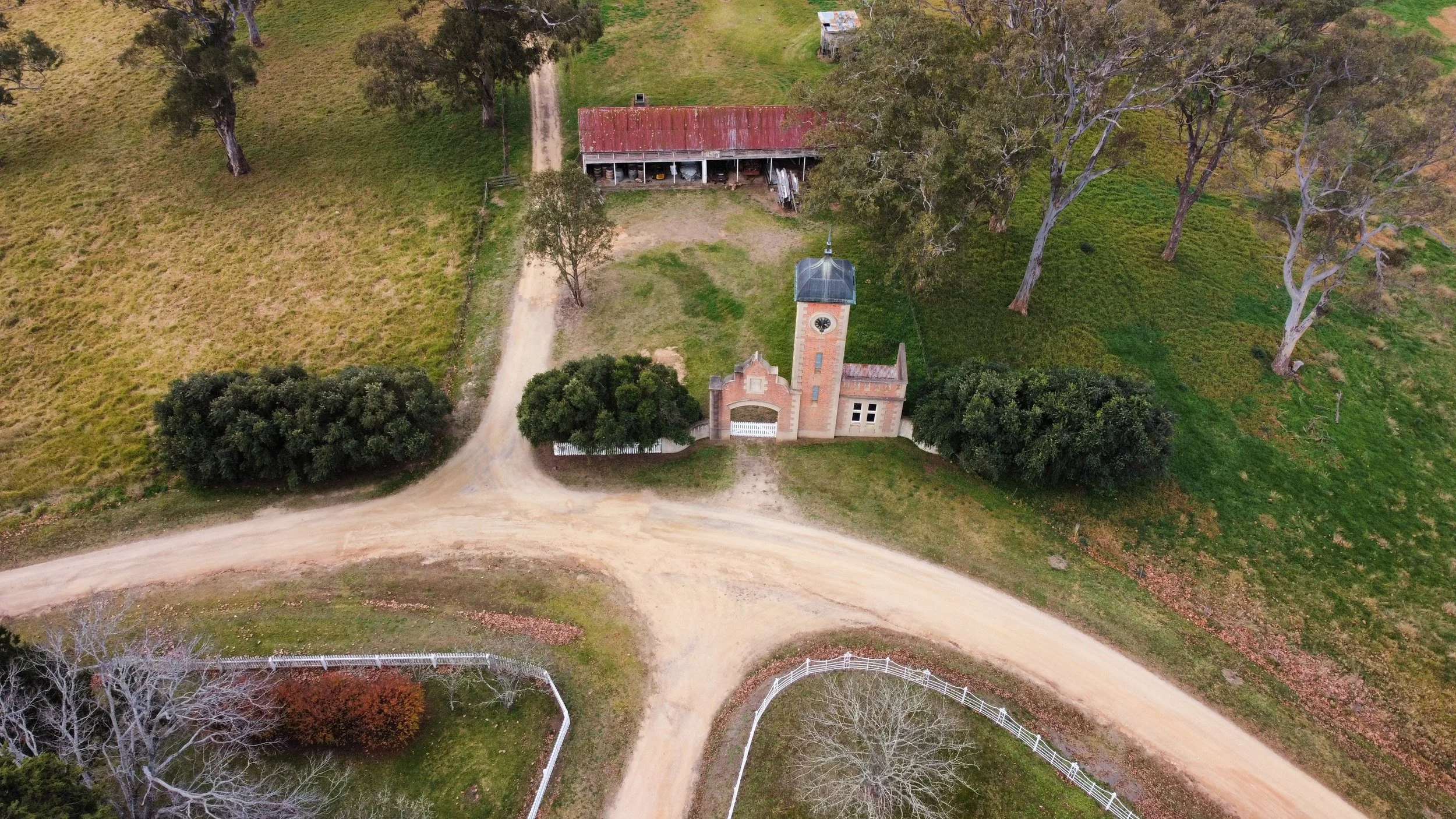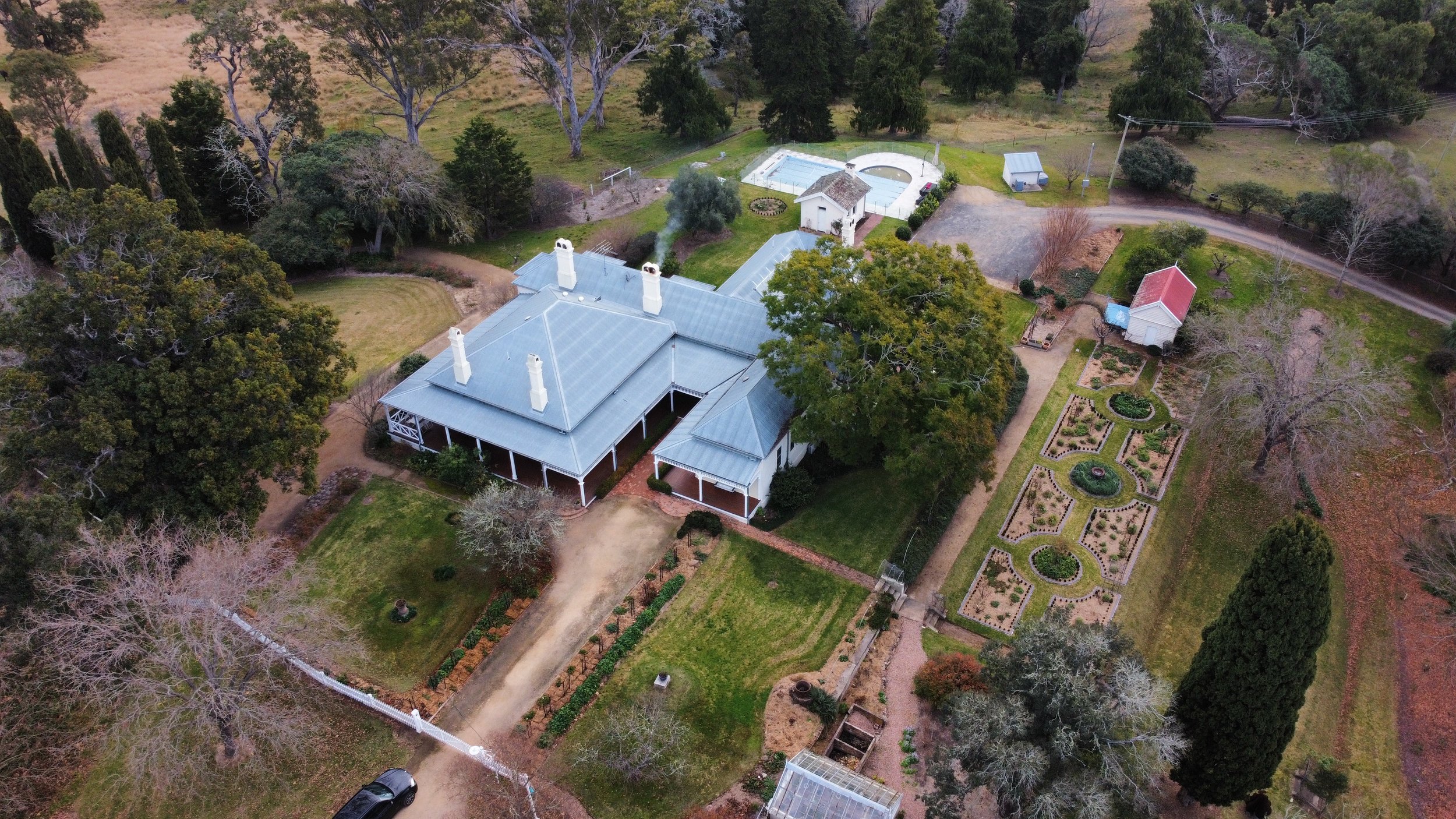Our History
1834
Kameruka is an aboriginal word meaning ‘wait until I return’.
In 1834 the Imlay brothers from the town of Eden acquired a local grazing run of about 400,000 acres and called it Kameruka. The property was primarily running beef cattle for meat, hides and tallow.
Like many pioneer farmers they had not bargained for the extremes the climate could offer and in 1848 after cattle disease and fire had decimated their herds, their financiers the Walker brothers took over the estate. The Walker brothers continued on in the hope of establishing a successful run and it is worth noting two points residing their activities while at Kameruka.
Firstly, they hunted in true ‘English’ fashion and kept a pack of hounds to hunt the native Dingo. Foxes were not introduced to Australia until much later.
Secondly, the first horses taken to New Zealand are said to have come from the Kameruka horse station. The Walker brothers had little more success than the Imlay brothers and in 1852 sold Kameruka to seven Sydney businessmen calling themselves the ‘Twofold Bay Pastoral Association’.
Two of the members of the Association were part of the Tooth family who were becoming well known in the State for their superior beer brewing exploits in Sydney, with the famous Tooth K.B. Lager, KB standing for ‘Kent’s Best’ because the family originated from the County of Kent in England.
After numerous changes of management James Manning was appointed to manage Kameruka in 1854. Under his guidance cheese making was introduced for the first time. Kameruka developed dramatically over the next 10 years. European families were brought to the estate including many German families well known for the skill and knowledge of dairying and cheese making.
In 1860 the Association disbanded and a year later the Robertson Land Act was passed giving free settlers the right to purchase the land they occupied. Kameruka diminished in size dramatically but the Tooth’s and James Manning continued with the smaller holding. James Manning bought the property in his own right but a year later sold it to Frederick Tooth who was then the owner of the brewery in Sydney, he had the capital to fully develop the estate. Frederick died in 1864 and left Kameruka to his nephew Robert Lucas-Tooth and he is the man responsible for how we see it today and certainly the man who established the property, soon to be one of Australia’s greatest.
Robert Tooth’s ideas were revolutionary to rural Australia but well known in England and were to take the lines based on the English estates at that time. This entailed the building of a community in the shape of a village which was supported by the agricultural pursuits taking place around it and the necessary manpower to run the enterprises living in the village, Robert Tooth combined his effort with Henry Wren, appointing him the manager in 1864. Dairying and fruit orchards were to become the agricultural pursuits which suited the Kameruka country and village scene well, as numerous employees were required to produce the milk, cheese and soft fruits.
Robert Tooth took on an enormous building progamme , most of which can be seen today, three Cheese factories, the Clock Tower, Village Shop, Butchers Shop, Village Hall, Holy Trinity Church, Dairies and some 30 houses for the employees as well as schools for the children, a Golf course and Cricket Oval for the enjoyment of staff.
Kameruka’s cheese production was based on the herds of Jersey cattle which resided on the estate. The Kameruka Stud was transferred from Tooth’s Bowral property in 1888. The estate flourished and Kameruka cheese became extremely popular locally and in Sydney where it was regularly shipped from the local port of Tathra.
Robert split the estate into three parts with a view to leaving each to his three sons but alas this was not to be, as two of his sons were killed early during the Great War of 1914-18 and Robert himself dying in 1915 after his return to England. Leonard Lucas-Tooth inherited the estate after his father’s death but he too died of pneumonia on active service in France in 1918. Leonard had two daughters and the estate was left in trust for one of them who later in life became Mrs Christine Foster. Christine Fosters youngest son Frank came to live on and run Kameruka in 1975 and resided there until selling the property in 2007.
After the Great War, Kameruka expanded its cheese production with 14 dairies being brought into operation. The estate changed very little between the first and second world wars and 250 tons of handmade cheese was produced annually, Industry problems began in the 1950’s and the estate started to diversify, firstly into wool production in 1952 and cheese production was increased dramatically when in 1958 milk was brought into the factory from outside dairies in the Bega Valley, Kameruka dairies were upgraded and the individual farms reduced in size to accommodate a beef herd. In 1971 the last cheese factory on Kameruka was closed and so the estates cheese production ceased after a peak in annual production of 1000 tons of cheddar cheese sold per year. The brand name Kameruka was sold to the Bega Co-operative Society, Kameruka ceased cheese manufacturing for numerous reasons but the most important was the need for new more automated factory and the ever increasing demand of city dwelling Australians for whole milk.
Kameruka passed from the Tooth family in 2007 when a new owner was found for the property. Giles Pritchard-Gordon, a shipping magnate from the UK purchased Kameruka in its entirety taking on numerous enterprises including a Merino Flock along with all the Kameruka staff, as well as adding a Black Angus Herd. He embarked on a major staged development programme including a major renovation of the Homestead and Allestree Cottage the Managers residence at the time, Unfortunately Giles passed away in 2011 and his family decided to sell Kameruka as three lots in 2014-15.
Barry and Michelle Moffitt, neighbouring dairy farmers bought the land portions at that time and finally bought the last remaining portion in June 2018 to include the original circa 1845 Kameruka Homestead and English style gardens, the village square and surrounding cottages and Lord’s View cricket oval. The couple have strong links to Kameruka as Barry worked there after leaving agricultural college his mother and father worked there and his wife too. They are continuing the work began by the previous owner in renovating and restoring the old homes on the estate. Currently Kameruka is still a working farm with about 3000 sheep and 600 beef cattle in the varied pastures.
It all begins with an idea. Maybe you want to launch a business. Maybe you want to turn a hobby into something more. Or maybe you have a creative project to share with the world. Whatever it is, the way you tell your story online can make all the difference.

